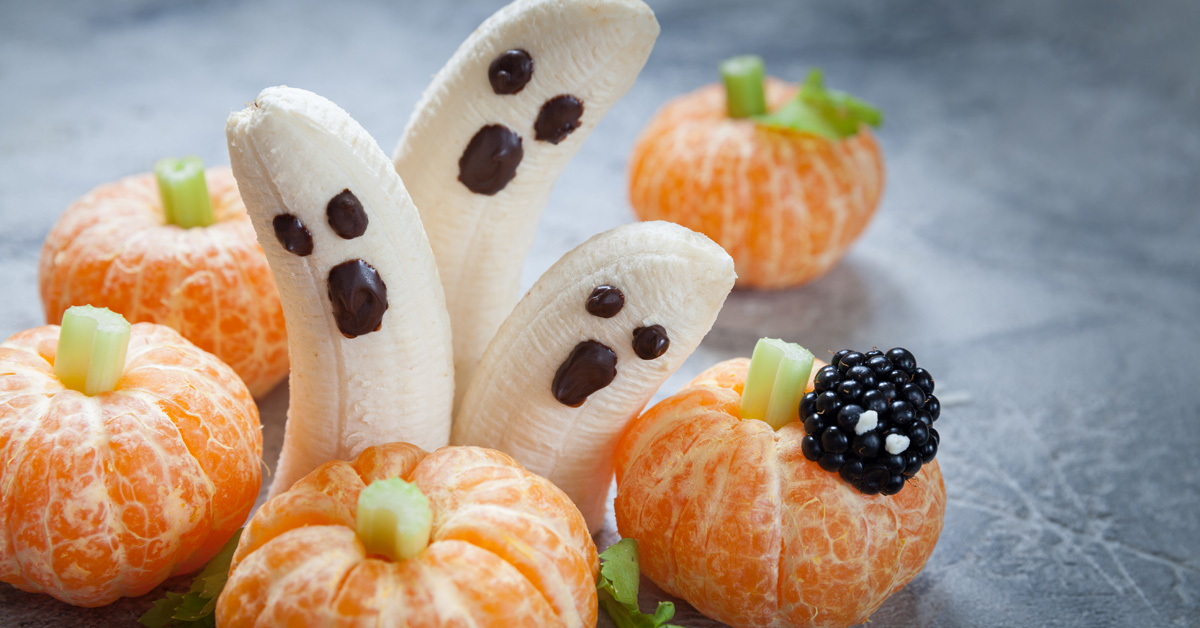Halloween is the time of year for spooky decorations, creative costumes and of course, candy. Many parents want their kids to have fun trick or treating, but don’t necessarily love the abundance of candy that comes with it. The candy itself isn’t bad, but the challenge can be how much is consumed and how often. Parents of children with food allergies have even more to worry about since 6 of the top 8 allergens are in the majority of Halloween candies.
Wheat, milk, soy, eggs, peanuts, and tree nuts are common in popular Halloween candy. Making trick or treating unsafe for children with food allergies. Even small amounts of these allergens can cause an allergic reaction.
The Teal Pumpkin Project was created to raise awareness of allergies and “promote inclusion” for trick or treaters with allergies. Putting a teal pumpkin at your front door lets trick or treaters know that you have safe, alternative treats for those with food allergies. Even kids without food allergies love non-candy treats. You can still pass out candy if you have a teal pumpkin on your step, but keep your candy and non-candy treats in separate bowls.
Fun non-candy alternatives:
- Stickers
- Glow sticks, flashing LED rings
- Bookmarks
- Bubbles
- Mini Slinkys
- Bouncy balls
- Play dough
- Temporary tattoos
- Key chains
- Activity pads
What about those that can have candy? You can enjoy your favorite treats to celebrate the holiday, like I mentioned earlier, focus on much and how often you are consuming treats.
Tips for a healthy Halloween:
- Eat like you would any other day. Have balanced meals for breakfast, lunch, and dinner to keep you satisfied.
- Don’t skip meals to ‘save up’ for Halloween treats. This can cause cravings and lead to over-consumption at the end of the day.
- Enjoy the treat you like – guilt free! Trying to avoid Halloween treats can lead to a binge later. Choose the treat you truly love and enjoy it!
- Offer fun-sized candy instead of the full size. Or consider non-candy treats like pretzels, popcorn, fruit snacks, goldfish, trail mix, and drink packets like hot cocoa or apple cider. Offer non-food treats listed above.
- Use the kid-empowered approach (if your child is old enough) to choosing Halloween treats to help them learn about balance and self-regulation. Instead of setting strict limits around treats, talk about portions, balanced nutrition, and how certain foods make your body feel. You can help guide them by giving them a few options of treats to choose from.
- Offer a healthy snack, like fruit or vegetables, with candy, to emphasize balance.
- Walking door to door to trick or treat is a good way to get the whole family active.
- At Halloween parties put emphasis on non-food aspects of the holiday – decorations, games, costume contests. Get people moving with games, a costume parade, or dancing.
Non-candy Halloween Treats:
- Boo-nana pops – half a peeled banana dipped in vanilla yogurt with 2 mini chocolate chips (or raisins) for the eyes and 1 for the mouth. Freeze and enjoy!
- Cutie pumpkins – peeled cutie with sliced celery stick for the stem
- Franken-kiwis – cut one end of your kiwi off and peel the skin from the bottom two-thirds of the fruit. Put 2 dried blueberries for eyes, break a pretzel stick into pieces, use 1 piece for the mouth, and stick the other two on each side of the head.
- Witches brooms – cut a cheese stick in half, and then cut the fringes of the broom ¾ up. Stick a pretzel stick into the cheese stick.
- Monster mouths – cut apple into slices and lay them on their side. Spread peanut butter (almond butter, sun butter, Nutella, or jelly) on one side of apple slice. Place mini marshmallows on one apple and sandwich it together with another apple slice.
Just remember, Halloween (& all other holidays) is one day out of the year, so enjoy it. How you eat every day of the year, not just one day, is what makes an impact on your nutrition and overall health.


